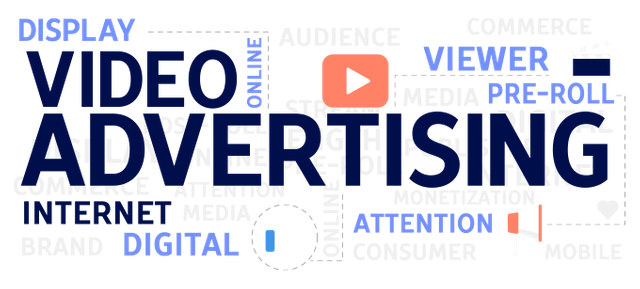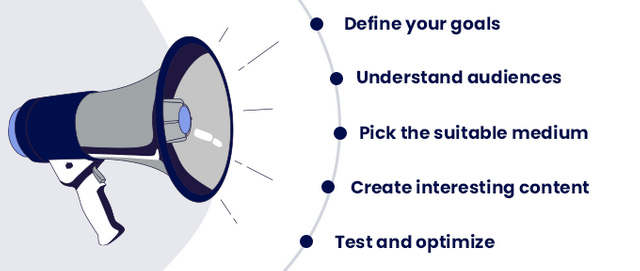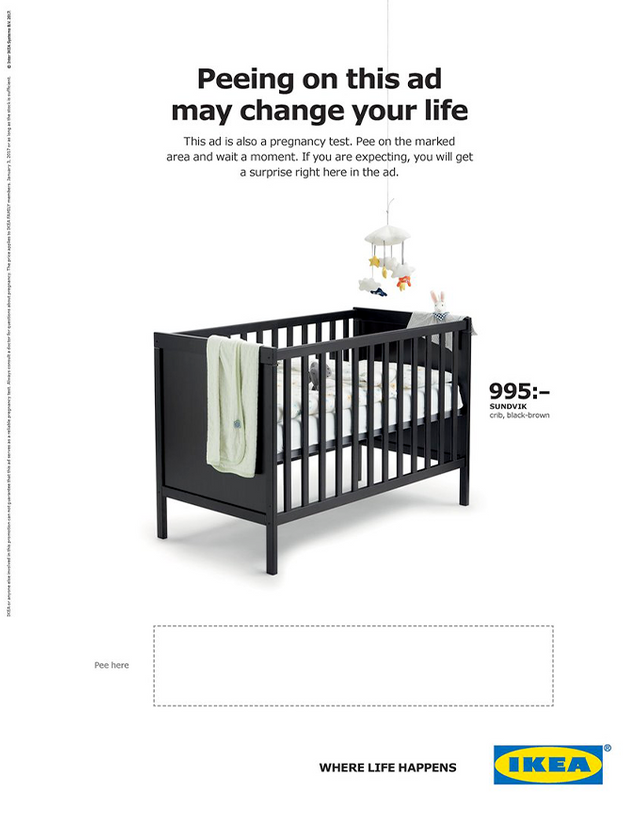
Imagine advertisements that invite active participation rather than just providing facts. Users participate actively in interactive advertising as opposed to passively seeing it. This type of advertising engages consumers, promoting engagement and leaving a lasting impression. It has everything from captivating quizzes and games to lifelike virtual reality experiences.
This article will explore what it is all about, review its variations, examine its advantages and disadvantages, offer advice for creating successful campaigns, provide examples of successful campaigns from well-known companies, consider alternative strategies, and highlight critical lessons.
What is interactive advertising?

The appeal of interactive advertisements rests in their capacity to customize the user experience according to personal preferences. Advertisers can provide each consumer with individualized content by gathering user data through interactions. This personalization improves engagement while also raising conversion rates.
Interactive advertising removes barriers between businesses and consumers by converting one-way communication into a two-way conversation. Companies can establish connections, learn insightful things, and produce significant outcomes.
Engaging viewers with the commercial's content is the primary goal of interactive advertising.
The user can perform tasks that range from basic actions like pressing buttons and filling out forms to more complex ones such as navigating through virtual reality environments. Curiosity-stoking and developing strong bonds between consumers and brands are the objectives.
The different types of interactive advertising

Billboards and print ads are no longer the primary forms of advertising. Technology and social media advancements have made interactive advertising more common among companies looking to engage their target demographic in novel and exciting ways.
Businesses can use interactive advertising strategies to attract customers and create lasting impressions.
Gamification
Brands create games and other tasks for people and audiences to play and participate in contests and giveaways. It gives people more brand experience and engages the audience. Gamification has made it easier for brands to engage with their audiences to promote their products and services.

Augmented Reality
Augmented Reality is modern technology that overlays digital components in natural environments. Brands can use this technology to make users test products and engage with the brands directly. Before launching the product, running such campaigns can boost both sales figures and brand recognition.

Source: https://virsabi.com/huge-potential-of-augmented-reality/
Quizzes
Quizzes are instrumental in getting user responses so that brands can give better and more personalized surveys. Gathering vital data is the most significant benefit of examinations, but they also tend to entertain and increase engagement with the brand.

Interactive videos
These interactive videos are a form of interactive marketing allowing users to participate in the brand story. From a wide range of actions, and multiple storylines, interactive videos provide people with a way to join their experiences into the brand experience.
Through polls, surveys, and contests, social media platforms can offer opportunities for interactive marketing. These promote consumer interaction with the brand while collecting insightful information and criticism.
Each brand can decide on their campaigns based on their objectives and goals. Every interactive campaign has merits and demerits, so proceeding with a campaign requires a complete understanding of the brand and its audience.

Pros and cons of interactive advertising
Due to technical advancements and the proliferation of social media platforms over the past several years, interactive advertising has become increasingly popular. There are many advantages to including interactive adverts in your marketing strategy.

Advantages
Direct engagement: Brands can reel in audiences with primary interactive activities like quizzes, games, polls, and QR codes. This type of direct marketing can help people create a positive experience for audiences and potential buyers.
Consumer preferences: interactive advertisement is one of the best ways to gather information about customer preferences. Multiple channels offer audiences access to forms and questionnaires. These can be instrumental in accessing public preferences data that would be otherwise complex and costly problems.
Personalization: The best part about the interactive campaign. It is the ability to personalize. Dynamic and user-generated content are some of the best examples of interactive advertisements.
Disadvantages
Considering the drawbacks of interactive advertising is crucial.
Cost: the price of making interactive, compelling experiences. High-quality games and films necessitate a lengthy and expensive production process.
Technical limitations: Various complicated mechanics apply depending on the channel used to broadcast advertisements. Some forms of interactivity might only be supported by some software or technology, reducing their appeal to particular target demographics.
Public response: Customers may only like interactive marketing efforts if they think they are active and worthwhile. Therefore, preparing and testing is essential before beginning any interactive ad campaign.
Numerous advantages of interactive advertising include improved targeting and opportunity for direct consumer interaction, which raises consumer engagement.
How to create a compelling interactive ad campaign?
Creating an effective interactive ad campaign requires careful planning and strategic execution. Here are some critical steps to consider when developing your campaign:

1. Define your goals: Define your goals for your interactive advertising campaign. Having a specific objective will make it easier to select the proper channels, whether it's to raise brand awareness, increase website traffic, or generate leads.
2. Understand audiences: Have a firm grasp of your target audience before creating any interactive material. Create buyer personas, conduct market research, examine consumer data,
and learn about the tastes and behaviors of your target market.
3. Pick the suitable medium: Different platforms like websites, mobile apps, social media, and digital billboards can display advertisements that engage users. Considering where your target audience spends most of their online time can help you choose the best platform that supports your aims.
4. Create interesting content: Different websites, mobile apps, social media sites, and digital signs can display ads that engage with users. Considering where your target audience spends most of their online time can help you choose the best platform that supports your aims.
5. Test and optimize: To ensure success, closely monitor your ad campaign's performance metrics, such as click-through rates (CTR), engagement levels, or conversion rates.A/B testing can compare different ad versions, and data-driven optimizations can be made as needed.
Always remember that originality is necessary to provide engaging, interactive marketing that stands out. Keep experimenting with new ideas while staying true to the demands of your target audience.
Case studies
Case Study: IKEA's Pregnancy "Crib" Campaign
IKEA developed a marketing strategy dubbed "brilliant yet wonderfully gross." They transformed their marketing strip into accurate pregnancy tests. The plan was for everyone who tested positive to view the lowered price and order the cot by phone at a low cost.

Source: https://campaignsoftheworld.com/print/ikea-pee-ad/
Case study: Old Spice's "The Man Your Man Could Smell Like"
"The Old Spice Guy"-themed interactive Old Spice advertising campaign was a big success. Old Spice was able to engage its audience and build buzz for its brand with engaging video advertising that let viewers interact with the character through social media sites like Twitter and YouTube. The advertisement improved brand recognition and sales.

Source: https://thebrandhopper.com/2023/02/23/the-man-your-man-could-smell-like-case-study-on-old-spice-branding-campaign/
Case Study: Burger King's "Whopper Sacrifice"
As part of Burger King's interactive marketing effort, "Whopper Sacrifice," customers were asked
to unfriend ten Facebook friends in exchange for a free Whopper burger. This clever strategy generated conversation on social media connections while profiting from people's need for free things. Burger King received a lot of attention from the campaign, which Facebook subsequently withdrew due to privacy concerns, and it sparked conversations about online relationships.
The case studies demonstrate the effectiveness of interactive advertising campaigns in grabbing consumers' attention, encouraging interaction, and generating results for brands across many industries. Businesses can apply cutting-edge tactics tailored to their target audience to build experiences that last with customers long beyond the initial exchange.

Source:https://therealtimereport.com/2009/01/12/review-bks-whopper-sacrifice-facebook-applicaction-generates-heat/
Alternatives to interactive advertising
Although interactive advertising can be a potent tool for interacting with people, some marketing techniques could work better without it. Fortunately, marketers have various other options when pursuing their objectives.
Content marketing: It creates intelligent, timely content that captures and holds the attention of potential customers. Publishing instructional content via blogs, videos, podcasts, or essays can help companies establish themselves as thought leaders in their industries and win over their target market.
Influencer marketing: Popular social media influencers that have a sizable following in their specialized fieldwork with brands. This strategy uses the influencer's authority and audience to promote goods and services honestly.
Traditional advertising: Some still-useful media include billboards, radio commercials, print ads, and television commercials. Although they may not be as participatory as digital approaches, they can increase sales and brand recognition.
Email marketing: To nurture leads with special offers and messaging, businesses can establish tailored email marketing campaigns. Many companies may still see outstanding results from email marketing because of contemporary automation and precise segmentation techniques.
Interactive advertising still benefits audience engagement and flexibility, as businesses can customize different solutions to meet their specific goals and audiences. Depending on your company's objectives, every technique provides benefits, from content marketing to conventional advertising methods like TV or radio ads.
Conclusion
How businesses interact with their target audience has been revolutionized by interactive advertising. Brands can engage users more deeply and produce memorable experiences using interactive features like quizzes, surveys, and games. Businesses have a variety of chances to attract customers and increase conversions thanks to the numerous forms of interactive advertising.
Brands can achieve their marketing objectives using interactive formats like personalized quizzes and immersive video advertising. So choose wisely and employ interactive advertising to benefit your audience and brand.